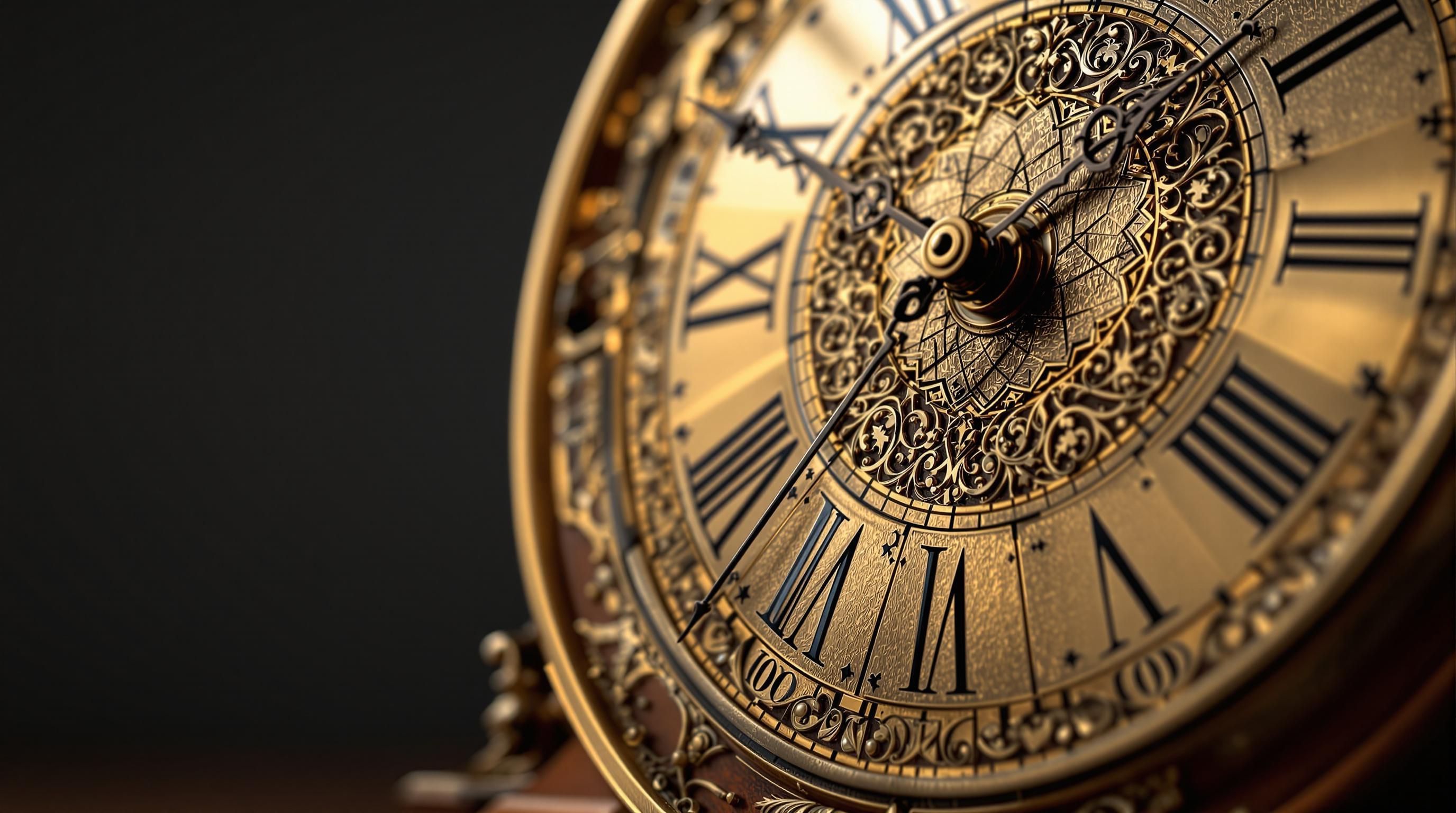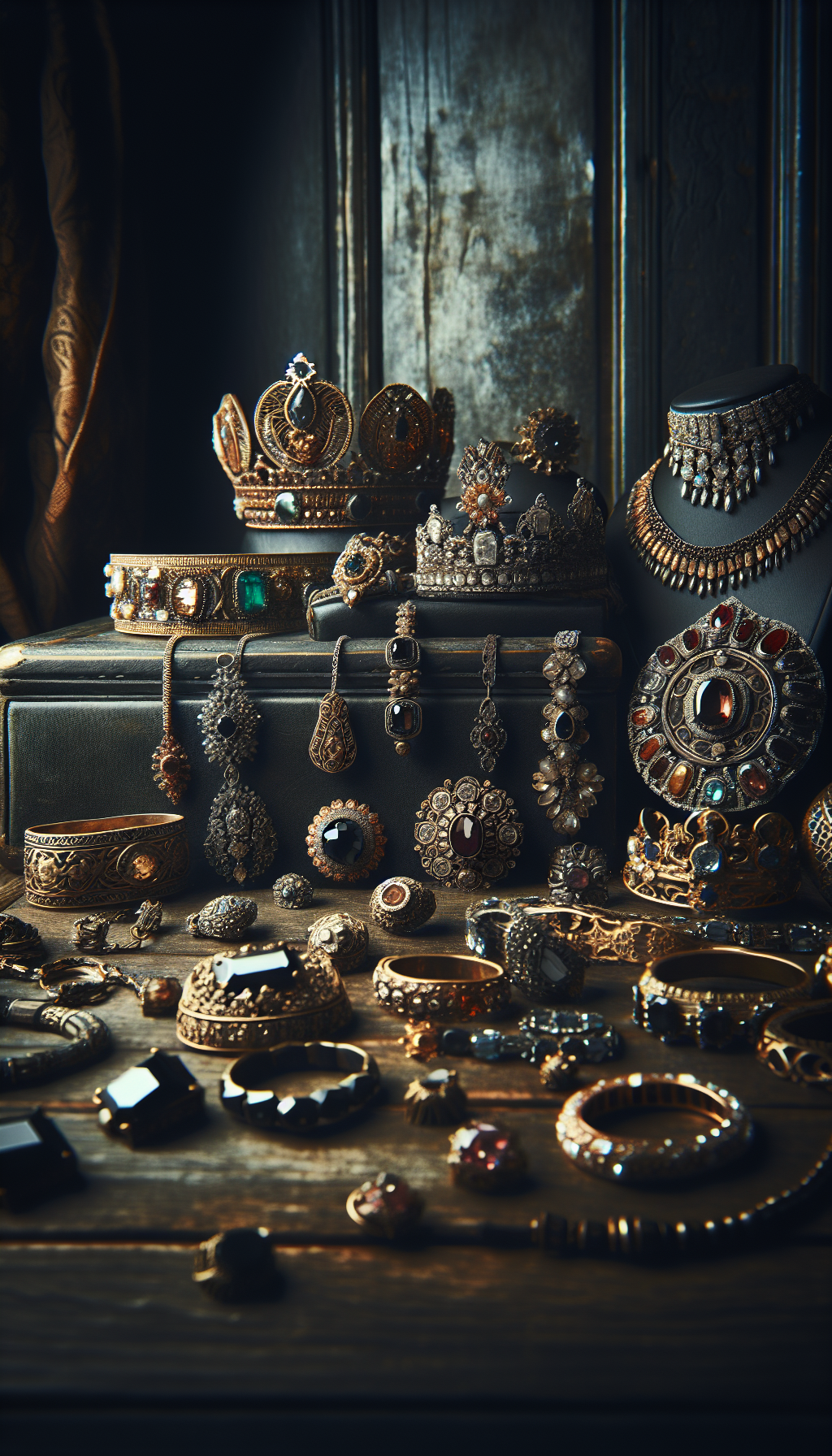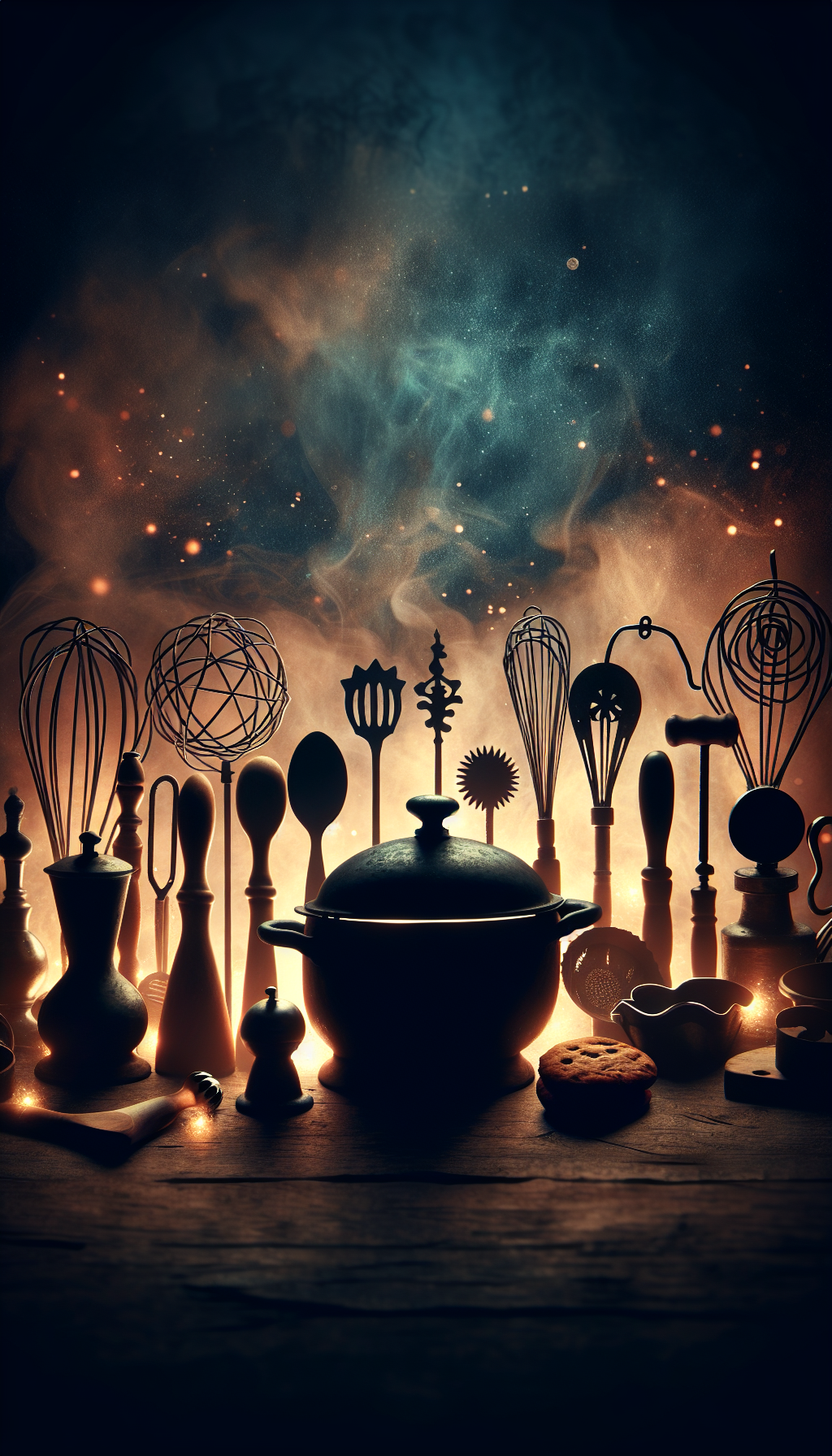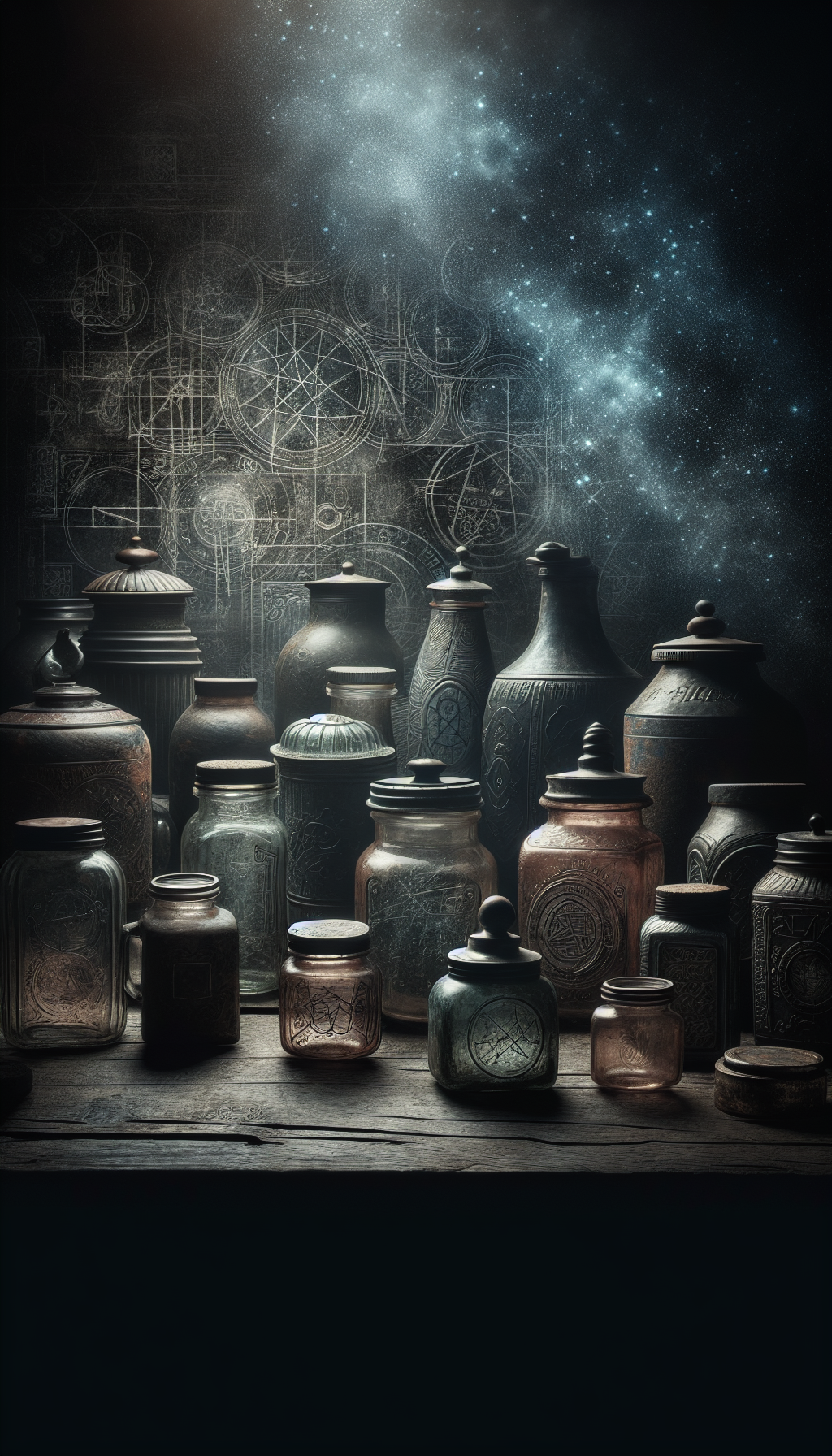Introduction to Antique Mantel Clocks
Antique mantel clocks represent the perfect marriage of functionality and decorative artistry. These timepieces sat proudly atop mantels and shelves in homes from the 18th century onwards, serving both as practical timekeepers and elegant statements of craftsmanship. Today, they’re coveted collectibles with values that can range from a modest $100 to extraordinary five-figure sums for the rarest examples.
If you’ve inherited or acquired an antique mantel clock, you may be wondering about its value and significance. This comprehensive guide will help you understand what makes these timepieces valuable, how to identify key makers and styles, and what current market prices indicate about their worth.
The Evolution of Mantel Clocks
Historical Timeline of Mantel Clocks
- 1750-1830
Golden Age of French Mantel Clocks
This period saw the creation of elaborate ormolu (gilt bronze) mantel clocks with exceptional craftsmanship. These highly decorative timepieces often featured mythological figures and intricate designs, commanding today's highest prices. - 1800-1900
American Clock Manufacturing Boom
Companies like Seth Thomas, Ansonia, and E. Ingraham began mass-producing affordable mantel clocks for the American market. These are among the most commonly found antique mantel clocks today. - 1850-1900
Victorian Mantel Clocks
Characterized by black marble, slate, or wood cases with ornate detailing. Often featured visible escapements or decorative figurines. These remain popular for their dramatic aesthetic. - 1900-1930
Art Nouveau & Art Deco Influences
The early 20th century brought new stylistic influences to mantel clock design, with cleaner lines, geometric patterns, and innovative materials that reflected the dramatic shift in decorative arts.
Key Factors Affecting Mantel Clock Value
Manufacturer and Brand Prestige
The clockmaker’s identity significantly impacts value. French clock makers like Jaeger-LeCoultre, Breguet, and Tiffany often command premium prices. Among American makers, Seth Thomas, Ansonia, and E. Howard pieces are particularly sought after.
Age and Rarity
Generally, older clocks (especially pre-1850) tend to be more valuable, though certain periods like Art Deco can command high prices despite being more recent. Limited production models or those with unusual features can dramatically increase value.
Materials and Craftsmanship
The quality of materials used - whether fine woods, marble, bronze, or gilt - directly influences value. Hand-carved details, inlay work, and exceptional metalwork all enhance a clock’s worth. Clocks with precious metals or gemstone embellishments naturally command higher prices.
Condition
Mantel Clock Condition Assessment
Check applicable items to determine your clock's condition status
- Original finish intact and uncleaned
- All original mechanical components present
- Movement works properly at all settings
- Case free of significant damage or repairs
- Original dial in good condition without touch-ups
- Original hands match the period and style
- Retains original glass or marble elements
- Strikes and chimes function correctly
Provenance and Historical Significance
Clocks with documented history, especially those owned by notable individuals or with interesting stories, can achieve significantly higher values. Original documentation, including receipts, certificates, or period photographs showing the clock, can substantially increase value.
Antique Mantel Clock Market Insights
Working Mechanism
A functioning clock will nearly always be worth more than a non-working example. However, many collectors are willing to invest in restoration for rare or exceptional pieces.
Identifying Valuable Antique Mantel Clock Styles
French Empire and Ormolu Clocks
These opulent timepieces feature gilt bronze (ormolu) cases with Classical, mythological, or historical figure decorations. Dating primarily from 1790-1830, they represent some of the highest-valued mantel clocks, often ranging from $2,000 to $20,000+ depending on size, complexity, and condition.
Victorian Black Marble Clocks
Popular from 1840-1900, these substantial timepieces feature black marble or slate cases, often with inlaid colored marble or semi-precious stone decorations. Values typically range from $300-$1,500 depending on complexity and condition.
American Shelf Clocks
Companies like Seth Thomas, E. Ingraham, and Ansonia produced countless wooden shelf clocks from the 1820s through early 1900s. Common styles include:
- Tambour clocks - horizontal, curved wooden cases resembling drums ($100-$400)
- Adamantine clocks - featuring a faux marble or stone finish ($150-$500)
- Column clocks - wooden cases with decorative columns flanking the dial ($200-$600)
Porcelain Mantel Clocks
Popular in the 19th century, these feature fine porcelain cases often decorated with hand-painted scenes or floral motifs. French and German examples can command $500-$3,000 depending on the quality of the porcelain work.
Art Nouveau and Art Deco Styles
Dating from 1890-1940, these distinctive styles reflect the dramatic shifts in design aesthetics of their eras. Quality examples range from $400-$2,000, with exceptional pieces reaching much higher values.
Antique Mantel Clock Price Ranges
Current market values by style and condition
</tbody>
</table>
How to Identify Your Antique Mantel Clock
Locating Maker’s Marks and Signatures
Examine your clock carefully for maker’s marks, which may appear:
- On the dial face (particularly common for French and English clocks)
- On the backplate of the movement (remove the back panel carefully)
- Inside the case, often stamped or applied to the wood
- On paper labels affixed to the inside of the case (common for American clocks)
Researching the Manufacturer
Once you’ve identified the maker, research their production history. Many clockmakers used specific design elements, case styles, or movement types during particular periods that can help date your clock.
Examining the Movement
The movement (mechanism) provides valuable clues:
- Hand-wound movements with verge escapements suggest pre-1830 manufacture
- Pendulum regulation offers clues about age and origin
- Striking mechanisms vary by maker and period
- Serial numbers on some movements can be traced to specific production years
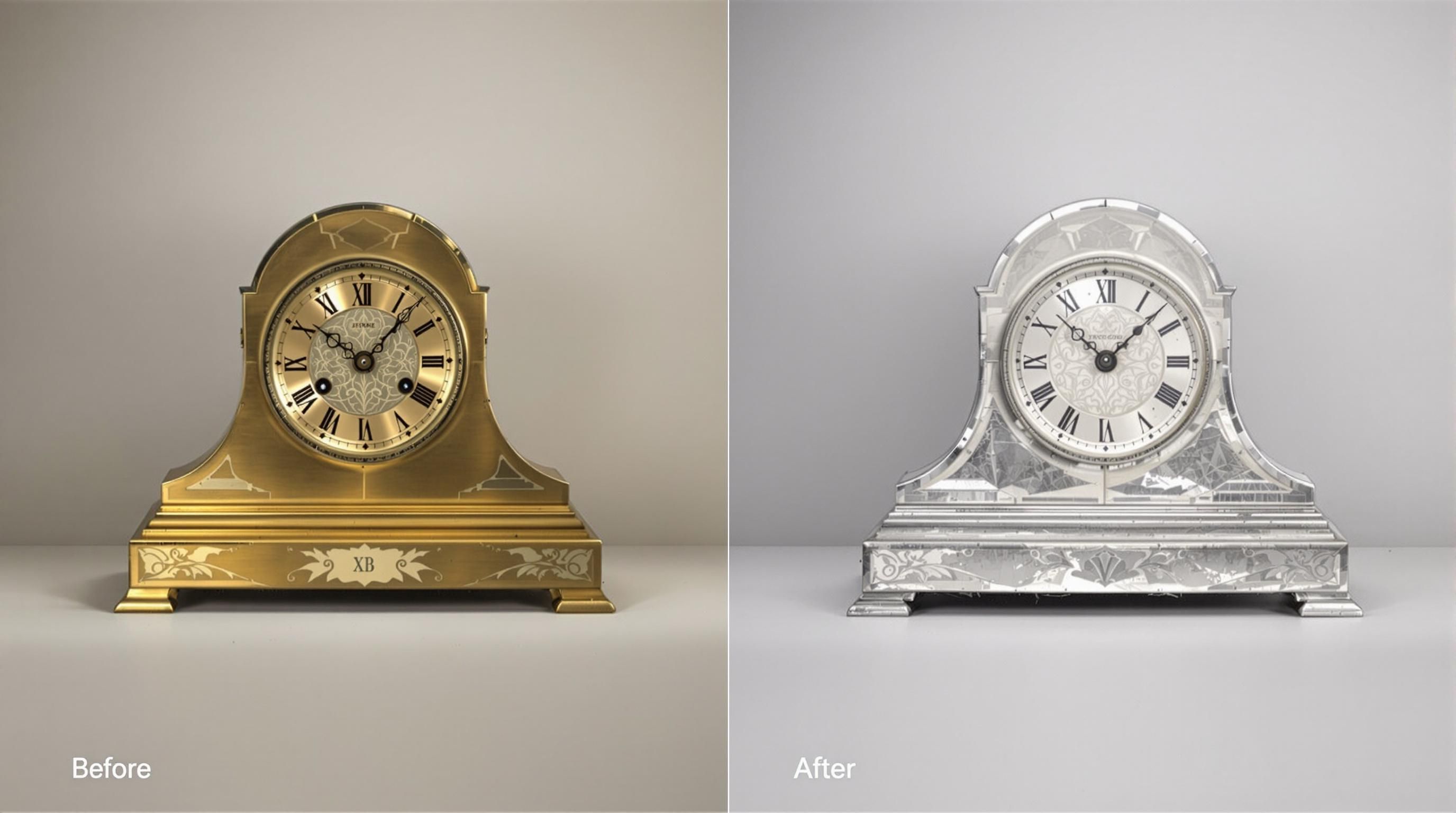
Analyzing Design Elements
Different periods featured distinct design aesthetics:
- Empire/Regency (1800-1830): Classical figures, mythological themes
- Victorian (1840-1900): Ornate, heavily decorated cases, often with columns
- Art Nouveau (1890-1910): Flowing, organic lines and nature motifs
- Art Deco (1920-1940): Geometric patterns, streamlined forms
Types of Movements Found in Mantel Clocks
- Pendulum movements - Traditional weight or spring-driven mechanisms
- Balance wheel movements - Common in smaller mantel clocks
- Torsion pendulum - Found in anniversary clocks with rotating pendulums
- 400-day/Anniversary movements - Designed to run for a year on one winding
Top Collectible Mantel Clock Manufacturers
French Luxury Clockmakers
- Jaeger-LeCoultre - Known for the innovative Atmos clocks that run on atmospheric pressure changes
- Breguet - Exceptional craftsmanship with sophisticated movements
- Raingo Frères - Famous for high-quality ormolu clocks with intricate decorations
- Leroy et Fils - Supplier to French royalty with superb mechanical innovation
Premium American Manufacturers
- Seth Thomas - One of America’s most prolific and respected clockmakers
- E. Howard & Co. - Known for exceptional quality and precision
- Chelsea Clock Company - Renowned for ship’s bell clocks and high-quality timepieces
- Tiffany & Co. - Produced luxury clocks often with exceptional cases
Notable European Makers
- Junghans - German manufacturer known for quality movements
- Gustav Becker - German maker whose clocks often feature intricate woodwork
- Elliott of London - English maker known for excellent bracket clocks
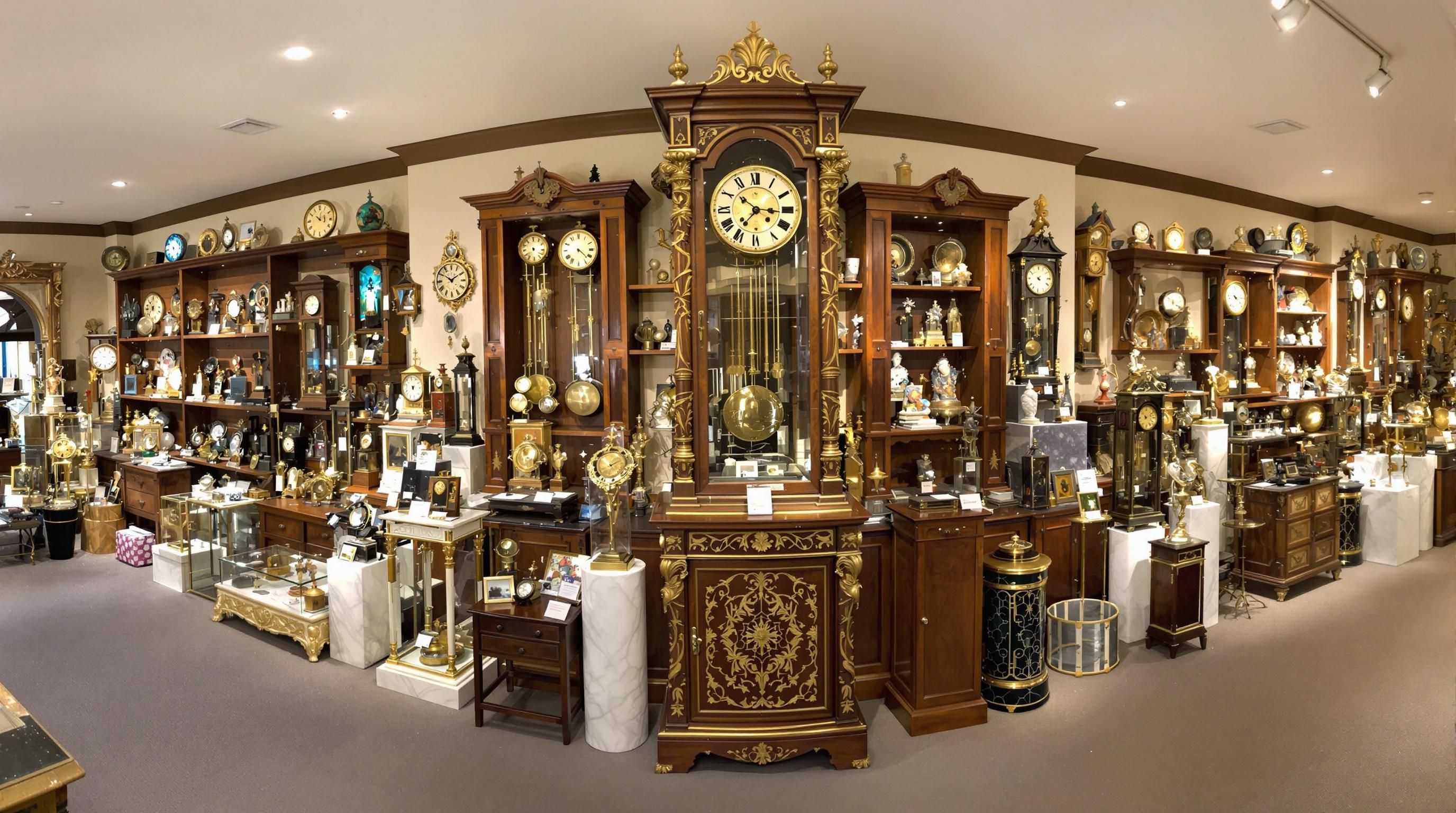
Where to Sell Antique Mantel Clocks
Specialty Auction Houses
For valuable or rare clocks, specialty auction houses often achieve the highest prices. Reputable options include:
- Fontaine’s Auction Gallery - Specializes in antique clocks and timepieces
- M.S. Rau - Deals in high-end antiques including fine clocks
- Sotheby’s and Christie’s - For museum-quality or exceptional pieces
Online Marketplaces
For mid-range and common models, online platforms offer wide exposure:
- eBay - The largest marketplace for antique clocks
- Etsy - Good for decorative or restored pieces
- Ruby Lane - Specializes in antiques with a vetted seller base
- Chairish - Design-focused platform ideal for decorative timepieces
Antique Dealers and Consignment Shops
Local options often provide hassle-free selling:
- Specialized clock dealers - For expert handling and targeted customer base
- Antique malls and shops - For pieces with moderate value
- Consignment stores like Boston Consignment - Ideal for local sales without auction delays
Collectors’ Forums and Specialty Groups
Direct selling to passionate collectors can yield good prices for the right pieces:
- National Association of Watch and Clock Collectors (NAWCC) events and forums
- Horological Facebook groups and online communities
Restoration vs. Preservation
The Value Impact of Restoration
For most antique mantel clocks, improper restoration can dramatically decrease value. Collectors typically prefer:
- Original finishes - Even with some wear or patina
- Original components - Especially dials, hands, and decorative elements
- Untouched cases - Free from modern refinishing
However, mechanical restoration by qualified experts is generally acceptable and often necessary for functioning timepieces.
When Restoration Makes Sense
Consider professional restoration when:
- The clock has significant historical or monetary value
- Mechanical issues prevent proper functioning
- Damage threatens the clock’s structural integrity
Finding Qualified Restoration Specialists
For valuable clocks, always seek certified horologists:
- Members of the British Horological Institute or NAWCC
- Specialists with documented experience with your clock type
- Restorers who can provide references and examples of similar work
DIY Maintenance Tips
For basic care (appropriate for common models):
- Clean case surfaces with appropriate materials (wood polish for wooden cases, mild soap for metal)
- Wind regularly according to the clock’s design
- Keep away from direct sunlight, heat sources, and high humidity
- Have movements professionally cleaned every 3-5 years
Authentication and Appraisal
Professional Appraisal Services
For insurance, estate planning, or significant sales, consider:
- Certified appraisers with horological expertise
- Auction house specialists who regularly handle fine timepieces
- Appraisers certified by the International Society of Appraisers or American Society of Appraisers
What to Expect During an Appraisal
A thorough appraisal typically includes:
- Examination of the movement and case
- Authentication of maker’s marks and signatures
- Assessment of originality and condition
- Research into comparable sales
- Documented valuation for insurance or sale purposes
Red Flags for Reproductions and Fakes
Be wary of:
- Inconsistencies between case style and purported age
- Modern screws or fasteners in supposedly antique cases
- Printed paper dials on clocks claiming to be pre-1900
- Movements that don’t match the claimed manufacturer or period
External Resources for Antique Clock Collectors
National Association of Watch and Clock Collectors
Membership organization offering publications, events, and educational resources for clock collectors and enthusiasts.
M.S. Rau Antiques - Rare Clock Collection
View exceptional examples of antique mantel clocks with detailed descriptions and pricing from a premier antiques dealer.
eBay Vintage Mantle Clock Marketplace
Browse current listings of antique mantel clocks to understand market values and available styles.
Fontaine's Auction - Clock Consignment
Information on selling antique clocks through a specialized auction house with expertise in timepieces.
Premier Clocks - Antique Mantel Clock Guide
Helpful guide on identifying authentic antique mantel clocks with valuation information.
Selling Antiques - Mantel Clock Collection
UK-based marketplace featuring 330+ antique mantel clocks with prices ranging from £150 to £85,000.
Investment Potential
Most Valuable Types for Investment
Certain categories have shown strong appreciation over time:
- French ormolu clocks from 1750-1830 - Consistently desirable for their craftsmanship and artistry
- Atmos clocks by Jaeger-LeCoultre - Innovative technology with enduring appeal
- Rare American clocks - Particularly unique models by E. Howard or early Seth Thomas examples
- Art Deco timepieces - Growing interest from design collectors has pushed values upward
Market Trends
The antique clock market has evolved in recent years:
- Increasing interest from Asian collectors, particularly in French decorative clocks
- Growing preference for unusual or distinctive designs over common models
- Premium prices for clocks with original documentation or provenance
- Renewed interest in mechanical objects among younger collectors
Long-Term Value Considerations
When assessing investment potential, consider:
- Rarity and limited production numbers
- Historical significance of the maker or design
- Condition and originality
- Aesthetic appeal that transcends specific period tastes
Common Questions About Antique Mantel Clocks
What is the best way to sell antique clocks?
The best selling method depends on your clock's value and your priorities:
For high-value, rare clocks: Specialty auction houses like Fontaine’s, Sotheby’s, or Christie’s typically achieve the highest prices but charge seller’s commissions.
For mid-range pieces: Online platforms like eBay, Etsy, Chairish, or Ruby Lane offer wide exposure but require shipping logistics.
For convenient local sales: Consignment shops, antique dealers, or local auctions provide hassle-free options though possibly lower returns.
For direct sales to enthusiasts: Clock collector forums, NAWCC events, or specialized Facebook groups can connect you with knowledgeable buyers.
Always research comparable sales before setting your price, and consider having valuable pieces professionally appraised.
Does anyone buy antique clocks?
Yes, there remains a strong market for antique clocks, particularly among:
- Dedicated clock collectors who appreciate the mechanical and historical aspects
- Interior designers seeking authentic period pieces for clients
- Antique enthusiasts interested in decorative arts and craftsmanship
- Museums and institutional collections (for exceptional or historically significant examples)
The market is most active for clocks in good working condition or rare examples with exceptional decorative qualities. French, German, and high-quality American mantel clocks consistently attract buyer interest.
How can I tell how old my mantel clock is?
Dating an antique mantel clock involves examining several elements:
- Maker’s marks: Research when the manufacturer operated and any date codes they used
- Movement style: Early 19th century clocks often use different escapement mechanisms than later examples
- Case design: Different periods had distinctive aesthetic styles (Empire, Victorian, Art Nouveau, etc.)
- Materials and construction techniques: Hand-cut dovetails, irregularly sized screws, and other handmade elements suggest earlier manufacture
- Serial numbers: Some makers like Seth Thomas used traceable serial numbering systems
- Patent dates: Often provide the earliest possible manufacture date
For precise dating, consider consulting with a professional horologist or seeking assistance from clock collector organizations.
What is the most valuable antique mantel clock?
The most valuable antique mantel clocks are typically:
French ormolu clocks from the late 18th/early 19th century - Museum-quality examples by master clockmakers like Raingo Frères or Leroy can reach $50,000-$100,000+
Clocks with royal or notable provenance - Timepieces owned by historical figures or from famous estates command significant premiums
Mystery clocks by Cartier - Rare examples with innovative "invisible" mechanisms can exceed $200,000
Exceptional skeleton clocks - Particularly those by famous makers like Deverberie or Brocot
Recent auction records show that extraordinary examples continue to achieve impressive prices, though the average collector will encounter more modest values for typical mantel clocks.
Should I get my antique mantel clock serviced?
Yes, periodic servicing is beneficial for most antique mantel clocks:
- Mechanical movements require cleaning and lubrication every 3-5 years
- Proper maintenance prevents excessive wear that can damage irreplaceable parts
- A well-maintained clock retains better value and functionality
However, for valuable or rare clocks:
- Only use qualified horological specialists with experience in your specific clock type
- Avoid "restorers" who replace original parts unnecessarily
- Request that removed original parts be returned to you
- Discuss the restoration approach before work begins to ensure it preserves value
Remember that over-restoration (particularly of cases and dials) can significantly reduce collector value.
Are Seth Thomas mantel clocks valuable?
Seth Thomas mantel clocks vary significantly in value:
- Common models from the early-to-mid 20th century typically range from $100-$300
- Earlier examples (pre-1900) with unusual features may reach $300-$600
- Rare models or those with exceptional cases can command $1,000+
Factors affecting Seth Thomas clock values include:
- Age (earlier examples tend to be more valuable)
- Rarity of the model
- Original condition with minimal restoration
- Working mechanical movement
- Quality and distinctiveness of the case design
While not typically among the highest-valued antique clocks, Seth Thomas pieces remain consistently collectible and are often excellent entry points for new collectors.
How do I determine if my antique mantel clock is authentic?
To authenticate an antique mantel clock:
Research the manufacturer - Verify the maker existed when the clock was supposedly made
Examine construction methods - Are they consistent with the purported age? (Hand vs. machine-cut joinery, etc.)
Check the movement - Is it appropriate for the period? (Early 19th century clocks wouldn’t have certain later innovations)
Inspect materials - Are case materials, dial typography, and decorative elements consistent with the claimed period?
Look for inconsistent restoration - Modern screws, inappropriate glues, or machine-made replacement parts
Analyze patina and wear patterns - Natural aging is difficult to fake convincingly
For valuable pieces, consider consulting a professional appraiser with horological expertise or a specialized auction house.
Are 1800s mantel clocks more valuable than 1900s examples?
Generally, 19th century (1800s) mantel clocks tend to command higher prices than 20th century (1900s) examples because:
Rarity - Fewer have survived from earlier periods
Craftsmanship - Often feature more hand-crafted elements and finer detailing
Historical significance - Greater connection to important design movements and makers
Materials - Often used higher quality or more labor-intensive materials
However, exceptions exist. Particularly for:
- Early Art Deco clocks (1920s-30s) by prestigious makers
- Mid-century modern designs with important designer attributions
- Unusual or innovative 20th century examples (like Jaeger-LeCoultre Atmos clocks)
The quality, rarity, and aesthetic appeal of a specific clock often matter more than age alone.
Conclusion: Understanding the True Value of Your Antique Mantel Clock
Antique mantel clocks represent fascinating intersections of art, craftsmanship, science, and history. Their value extends beyond mere monetary worth to encompass aesthetic beauty, mechanical ingenuity, and tangible connections to past eras.
Whether you’re a collector, inheritor, or seller of these timepieces, understanding the factors that influence their value allows you to make informed decisions about preservation, restoration, and potential sales. The most valuable mantel clocks typically combine exceptional craftsmanship, historical significance, original condition, and aesthetic appeal that transcends changing tastes.
As with many antiques, the market for mantel clocks continues to evolve. While some common models have seen prices stabilize or decline, exceptional examples and those from prestigious makers continue to achieve impressive results at auction. By focusing on quality, condition, and provenance, collectors can identify pieces likely to maintain or increase their value over time.
Whether your interest in antique mantel clocks stems from appreciation of their beauty, fascination with their mechanics, or investment potential, the journey of discovery and learning adds immeasurable value to these charming timepieces that once graced the homes of previous generations.
Get a Professional Appraisal
Unsure about your item’s value? Our certified experts provide fast, written appraisals you can trust.
- Expert report with photos and comps
- Fast turnaround
- Fixed, upfront pricing
No obligation. Secure upload.
| Category | Price | Notes |
|---|---|---|
| French Ormolu Empire Style | $2,000-$20,000+ | Exceptional examples with elaborate figurative decorations |
| American Wooden Shelf Clocks | $100-$600 | Higher prices for rare models in original condition |
| Victorian Black Marble | $300-$1,500 | Values increase with quality of inlay work and bronze mounts |
| Porcelain Case Clocks | $500-$3,000 | Premium for fine hand-painted decoration |
| Art Deco Mantel Clocks | $400-$2,000 | Higher values for clocks by named designers |
| Atmos Clocks by Jaeger-LeCoultre | $1,200-$5,000 | Depending on age, model, and condition |
